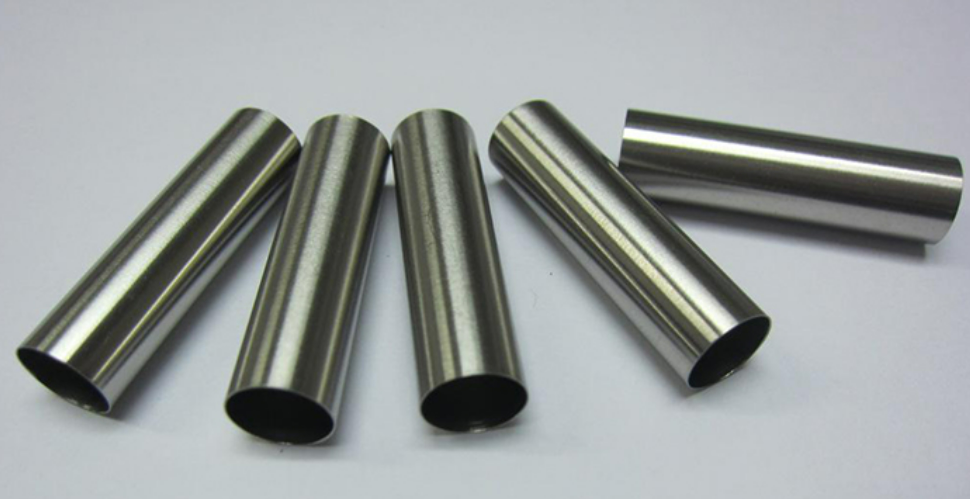فولاد ضد زنگ 316 is a widely used metal material, which is highly favored due to its excellent corrosion resistance. In this article, we will detail the مقاومت در برابر خوردگی فولاد ضد زنگ 316 and its performance in different environments.

I. Chemical composition of 316 Stainless Steel
316 stainless steel is an austenitic stainless steel containing 17% to 20% chromium (Cr) and 11% to 15% nickel (Ni). Additionally, it contains 2% to 3% molybdenum (Mo) as well as certain amounts of titanium (Ti) and nitrogen (N). The content and ratio of these alloying elements determine the physical and chemical properties of 316 stainless steel.
II. Corrosion resistance of 316 Stainless Steel
Acidic Environment
In acidic environments, 316 stainless steel exhibits good corrosion resistance. Its high chromium content (17% to 20%) allows it to form a dense layer of chromium oxide on the surface, preventing further corrosion. Additionally, the addition of molybdenum improves the material’s corrosion resistance and resistance to pitting. Therefore, 316 stainless steel demonstrates good corrosion resistance in acids such as sulfuric and nitric acids.
Alkaline Environment
In alkaline environments, 316 stainless steel also exhibits good corrosion resistance. The stability of the passive film formed on the surface makes it resistant to corrosion in alkaline solutions. Furthermore, due to the addition of titanium and nitrogen, 316 stainless steel shows excellent resistance to intergranular corrosion. However, in certain strongly alkaline environments, such as high-concentration sodium hydroxide solutions, 316 stainless steel may experience corrosion.
Salt Spray Environment
Salt spray environments can have a significant impact on the corrosion of metal materials. However, 316 stainless steel demonstrates good corrosion resistance in salt spray environments. The stable passive film formed on the surface can prevent most ions from passing through. Additionally, 316 stainless steel has good resistance to localized corrosion and crevice corrosion, making it suitable for use in saltwater and industrial atmospheres.
High-temperature Environment
High-temperature environments can accelerate the corrosion of metal materials. Nevertheless, 316 stainless steel still exhibits good corrosion resistance at high temperatures. Its austenitic structure allows it to maintain good mechanical properties and corrosion resistance at high temperatures. However, it should be noted that as the temperature increases, the corrosion resistance of 316 stainless steel gradually decreases.
III. Factors Affecting the Corrosion Resistance of 316 Stainless Steel
Alloy element content: The content of chromium, nickel, and molybdenum in 316 stainless steel significantly affects its corrosion resistance. Higher levels of chromium result in better corrosion resistance; the addition of nickel enhances the material’s strength and corrosion resistance, and molybdenum improves the material’s resistance to pitting and crevice corrosion.
وضعیت سطح: The roughness, cleanliness, and overall condition of the surface affect the corrosion resistance of 316 stainless steel. A rougher surface can form micro-electrodes that accelerate corrosion; surface contamination can disrupt the formation of a passive film and increase corrosion rates; and a rough or uneven surface can reduce material resistance.
Media properties: Factors such as temperature, pressure, concentration, and pH significantly impact the corrosion resistance of 316 stainless steel. Extreme environments such as high temperature, high pressure, high concentration, and acidic or alkaline media can accelerate material corrosion.
Stress effects: In stressful conditions, such as those resulting from welding, processing, or assembly operations that introduce residual stress, stress-corrosion cracking (SCC) can occur, negatively impacting the material’s corrosion resistance.
سایر عوامل: In addition to the above factors, factors such as service environment, microbial corrosion, erosion-corrosion, and others can also affect the corrosion resistance of 316 stainless steel.
IV. نتیجه
از اینکه مقاله ما را خواندید متشکریم و امیدواریم بتواند به شما کمک کند تا درک بهتری از آن داشته باشید مقاومت در برابر خوردگی فولاد ضد زنگ 316. اگر می خواهید اطلاعات بیشتری در مورد فولاد ضد زنگ 316 بیابید، به شما توصیه می کنیم که از آن بازدید کنید فولاد ضد زنگ سینو.
به عنوان تامین کننده پیشرو 316 محصولات فولادی ضد زنگ در سراسر جهان، فولاد ضد زنگ Sino به مشتریان با کیفیت بالا نوار فولادی ضد زنگ 201 و نوار فولادی ضد زنگ 304، فولاد ضد زنگ 409 را ارائه می دهد. فولاد ضد زنگ 316 و 316L, میله های شش گوش استیل ضد زنگ کویل های فولادی ضد زنگ نورد گرم, ورق های فولادی ضد زنگ رنگی, فولاد ضد زنگ ورق های سوراخ دار, میله های زاویه ای از جنس استنلس استیل، نوارهای فولادی ضد زنگ دقیق نورد سرد، سیم استیل ضد زنگو صفحات استیل ضد زنگ برجسته با قیمت بسیار رقابتی
 86 + 18621535697-XNUMX
86 + 18621535697-XNUMX  :export81@huaxia-intl.com
:export81@huaxia-intl.com